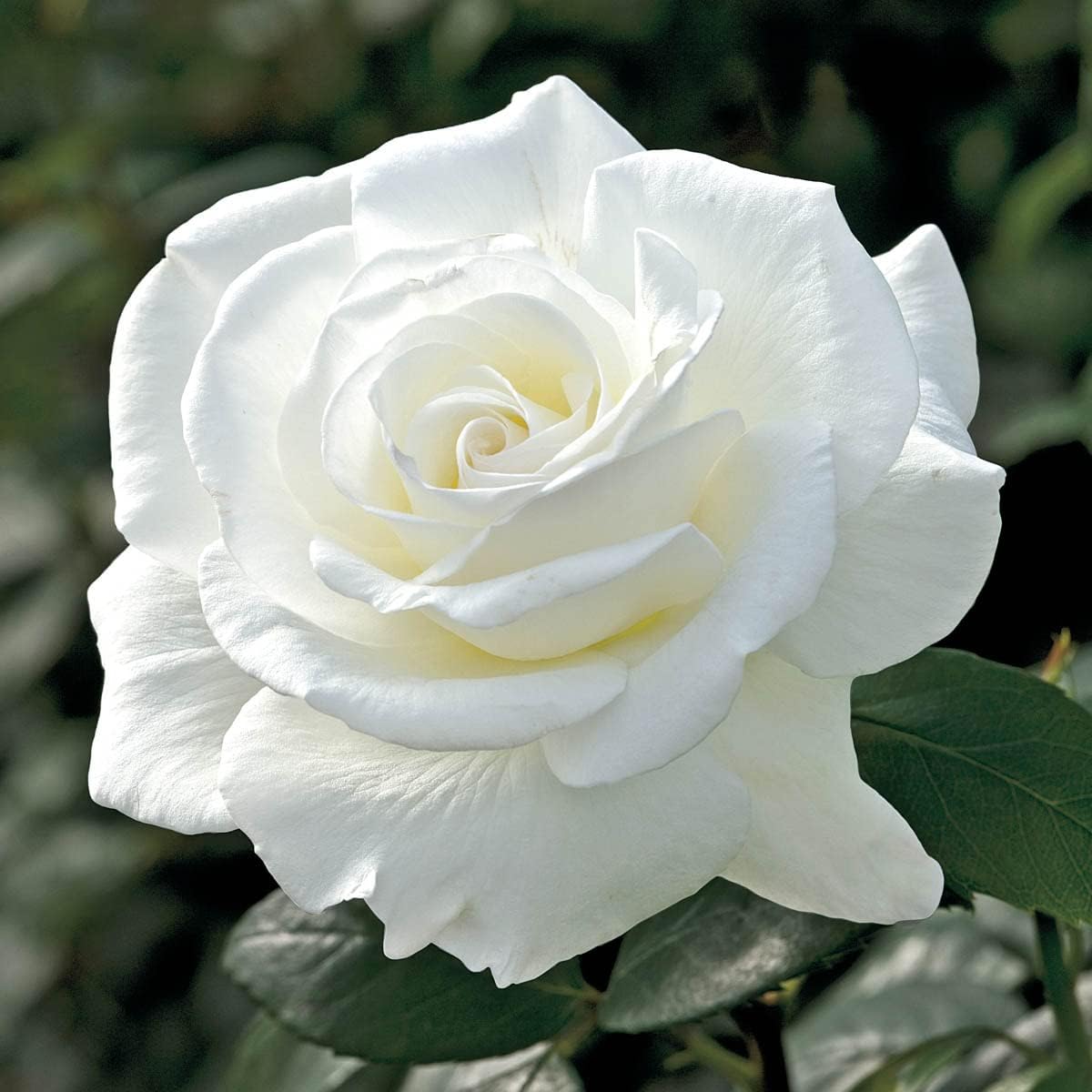John F. Kennedy rose

John F. Kennedy Rose: A Presidential Bloom for Your Garden
The John F. Kennedy rose, a distinguished hybrid tea variety, pays tribute to the 35th President of the United States. Bred by Eugene S. Boerner and introduced in 1965 by Jackson & Perkins Co., this rose is celebrated for its elegant white blooms and disease resistance, making it a cherished addition to any garden.
Characteristics of John F. Kennedy Rose
- Name: John F. Kennedy (President John F. Kennedy, JFK)
- Bred by Eugene S. Boerner (United States, before 1965)
- Type: Hybrid Tea
- Bloom Description:
- Size: Huge (average diameter 5.5 inches)
- Color: White or white blend, with a greenish tint in the bud stage
- Petal Count: Very full (41+ petals)
- Bloom Form: High-centered, ovoid buds
- Fragrance: Moderate
- Foliage: Leathery, large, and dark green
- Growth Habit: Strong, upright, bushy
- Height: 3-5 feet (90-150 cm)
- Blooming Pattern: Blooms in flushes throughout the season
- USDA Hardiness Zones: 7b and warmer
- Disease Resistance: Highly resistant to diseases
Elegance and Fragrance
The John F. Kennedy rose is renowned for its striking white flowers, which may exhibit a subtle greenish tint in the bud stage. These blooms open slowly and gracefully, revealing full petals that stand up well to heat. The flowers have a moderate fragrance that adds a pleasing aroma to the garden, making it a delightful choice for visual and olfactory appeal.
Growth and Care
This rose variety thrives in warmer climates and can bloom continuously throughout the season. Its firm, upright growth habit makes it an excellent choice for garden beds, borders, and containers. It can reach heights of 3 to 5 feet with proper care, providing a substantial presence in the garden.
Pruning and Maintenance
Regular pruning is essential to keep your John F. Kennedy rose healthy and blooming. In early spring, remove old canes and any dead or diseased wood. Cut back canes that cross each other to improve air circulation. In warmer climates, prune the remaining canes by about one-third. You may need to prune more in colder areas to maintain the plant’s vigor. Regular deadheading of spent blooms encourages repeat flowering and maintains the plant’s tidy appearance.
Planting and Soil Requirements
John F. Kennedy roses prefer full sunlight and well-drained soil. They can adapt to various soil pH levels, from moderately acidic to slightly alkaline. Ensure the planting site receives adequate sunlight to promote healthy growth and abundant blooming. This rose is hardy and warmer in USDA zone 7b, making it suitable for various climates.
Ideal Uses for John F. Kennedy Rose
The John F. Kennedy rose’s versatility makes it suitable for various garden settings. It works beautifully in mixed borders, as a stand-alone specimen, or containers. The large, white blooms are excellent for cut flowers, adding elegance to floral arrangements. This rose also attracts bees, contributing to the ecological health of your garden.
Tribute to a Legacy
Cherished as a tribute to President John F. Kennedy, this rose symbolizes elegance, resilience, and beauty. Its slow-opening blooms and vigorous growth habit reflect the enduring legacy of its namesake. Gardeners value the John F. Kennedy Rose for its aesthetic appeal, ease of care, and reliable performance.
The John F. Kennedy rose is a distinguished addition to any garden, offering a blend of visual beauty, fragrance, and robust growth. With proper care, this hybrid tea will reward you with stunning blooms and a lasting tribute to one of America’s most beloved presidents. Whether you’re a seasoned gardener or a novice, the John F. Kennedy rose is a remarkable choice to enhance the beauty and charm of your outdoor space.
